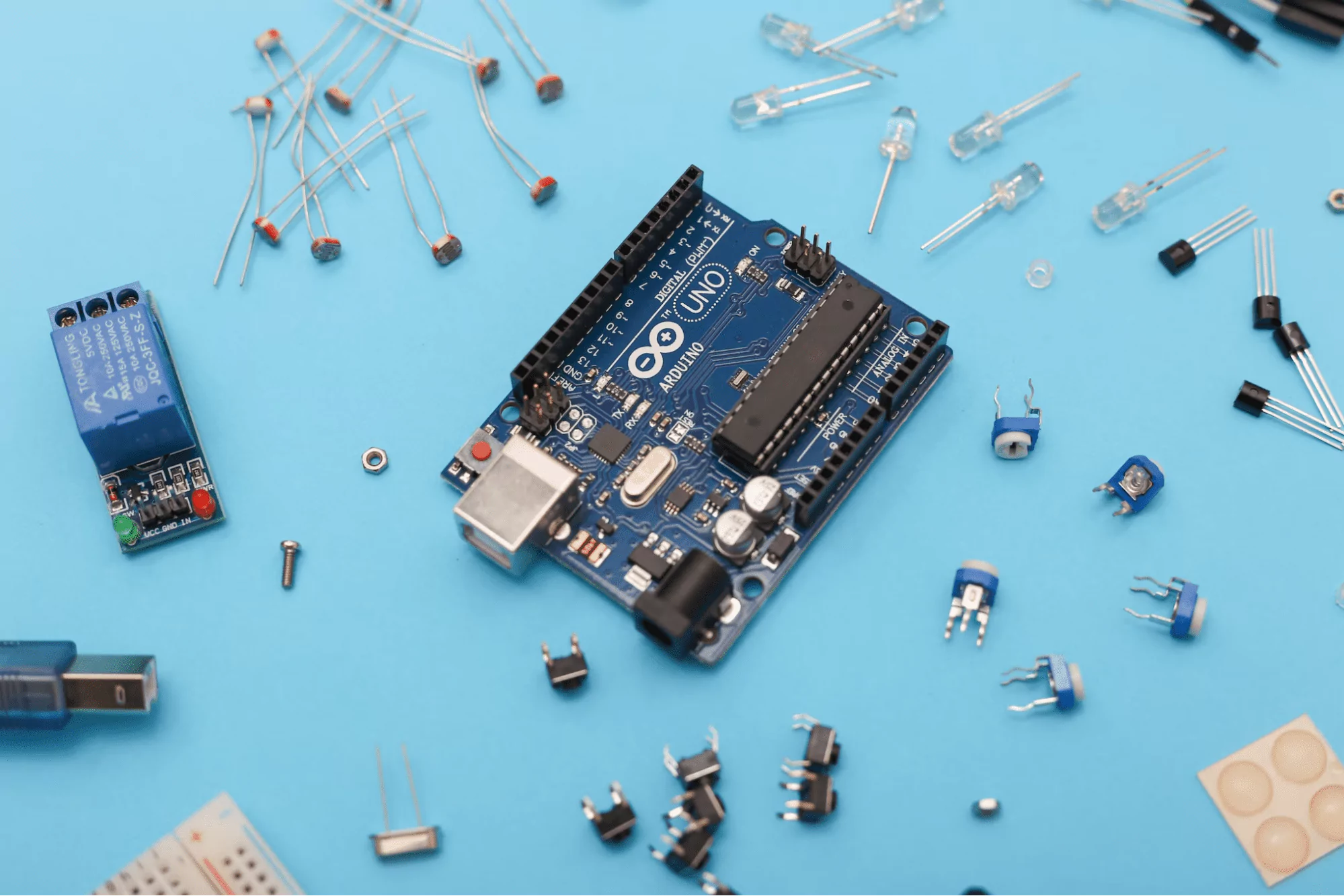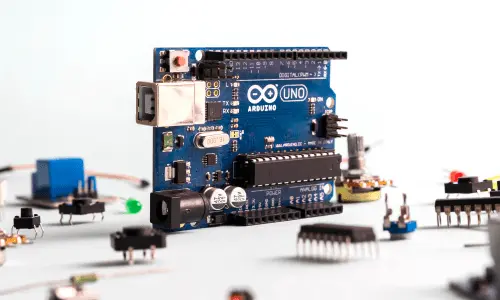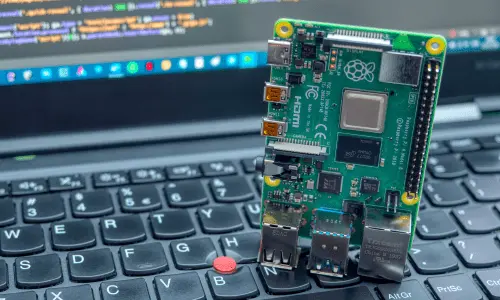


Moonpreneur
Update: This article was last updated on 18th December to reflect the accuracy and up-to-date information on the page.
What is Arduino?
Arduino is an open-source electronics platform based on easy-to-use hardware and software. Arduino boards can read inputs–a light on a sensor, a finger on a button, or a Twitter message–and turn them into an output–activating a motor, turning on an LED, or publishing something online.

One can tell their board what to do by sending a set of instructions to the microcontroller on the board.
What is Raspberry Pi?
The Raspberry Pi is a credit-card-sized computer with its memory, processor, and graphics card. The board is simple to set up and operates on the Linux operating system. It was created to promote computer science teaching and learning in schools. It was an instant hit. So much so, that it is now used in high-end applications like robotics design.

One of the best boards to experiment with around the Arduino board and Raspberry Pi is the Embedded Learner Board.
It is an electronics board designed for tech enthusiasts that they can use to gain hands-on experience in coding, electronics, and IoT by simply connecting it to Arduino, Raspberry Pi, or ESP using jumper wires.
Arduino, Raspberry Pi, and Robotics are some of the most well-known examples of embedded hardware and software in the technological world. The Embedded Learner Board offers hands-on experience with embedded hardware and instills technical skills that can prepare you to start your own business.
This board is for you if you are an electronics enthusiast interested in embedded hardware and software. A 16×2 Alphanumeric display, 7-Segment, Relay, IR Sensor, Push Buttons, LEDs, Vibration Motor, Temperature Sensor, Buzzer, and Potentiometer are included in the Embedded Learning Board. Simply connect this board to your chosen Arduino or Raspberry Pi model using jumper wires and begin programming, as well as learning more about the board’s developments as you go.
This board has a lot of potential because it allows for experimentation.
Arduino Vs Raspberry Pi which one is better?
The Raspberry Pi is more sophisticated than the Arduino, which is the most obvious distinction. In truth, Raspberry Pi is a small computer, and Arduino is a microcontroller. The Arduino Uno, the company’s most recent model, can be utilized in a variety of ways. It’s compatible with PC, Mac, and Linux, and it’s ideal for beginners who want to try their hand at simple electronics projects.

When your project, on the other hand, necessitates the use of a real CPU, the Raspberry Pi is a popular alternative. Raspberry Pi’s operating system and features are useful for creating complicated robots from scratch (which demand more coding and a strong processor), programming a device to handle various duties, and/or performing complex calculations.
Feature of Anduino or Raspberry Pi
| Feature | Arduino | Raspberry Pi |
|---|---|---|
| Purpose | Microcontroller for hardware projects | Single-board computer for general-purpose computing |
| Processing Power | Limited (usually simpler tasks) | Higher processing power (can run a full operating system) |
| Operating System | No operating system (runs sketches) | Linux-based operating system (e.g., Raspbian, Ubuntu) |
| Programming | C/C++ (Arduino IDE) | Multiple languages (Python, C++, Java, etc.) |
| Connectivity | Limited connectivity options | Extensive connectivity options (USB, HDMI, Ethernet, GPIO) |
| I/O Pins | Many digital and analog pins | GPIO pins, USB ports, HDMI, audio/video outputs |
| Graphics | No dedicated graphics capability | Capable of graphics rendering (via HDMI) |
| Storage | No built-in storage | MicroSD card for storage |
| Cost | Pocket-friendly | Slightly expensive, but offers more capabilities |
| Learning Curve | Easier for beginners | May have a steeper learning curve, especially for beginners |
| Projects | Ideal for embedded systems and simple tasks | Versatile for various projects, including multimedia and IoT |
The Key Arduino vs Raspberry Pi Differences
Both single-board computers, as previously mentioned, have a good reputation and are popular among amateurs. Choosing one, despite the differences in characteristics and capabilities, boils down to determining which board provides the best features for your project.
The key features that distinguish these two single-board computers are listed below:
| Features | Arduino | Raspberry Pi |
|---|---|---|
| Learning Curve | Requires little or no computer or programming experience | Best suited for people who are familiar with Linux and Unix |
| Simplicity | With just a few lines of code, Arduino can easily be connected to analog sensors and a variety of other electronic components. | Multiple applications and libraries must be installed to build an interface between the sensors, electronic components, and the board. |
| Compatible Programming Languages | The board is developed in the Java programming language, making it simple to learn how to program with Arduino for novices. | Raspberry Pi is a single-board computer designed to enable children to learn programming languages like Python, HTML 5, JQuery, Perl, JavaScript, Erlang, etc. |
| Networking Abilities | Arduino ports, provide for limited direct networking connectivity. It necessitates the use of an extra chip to connect directly to the Ethernet port. | Raspberry’s networking capabilities include wireless and Bluetooth connectivity, ethernet connectors, an HDMI port, four USB ports, a camera port, a DSI display, a micro-USB port, and an LCD port. |
| Processor Speed | Arduino is a simple microprocessor and has a clock speed of 16 MHz. | Raspberry Pi is a functioning computer with a clock speed of 700 MHz. |
Final Thoughts
Arduino vs Raspberry Pi is a vast subject and other criteria distinguish these two single-board computers such as input/output, storage space, power consumption, and availability.
Regardless of its advantages and disadvantages, the Arduino board is the greatest choice for beginners searching for an introduction to electronics. Raspberry is best suited to advanced Linux users or those wishing to expand their skills.
To gain a better understanding and hands-on working knowledge related to both Arduino and Raspberry Pi, book a free robotics workshop with Moonpreneur and experience a highly unique and expertly designed Robotics Course which aims to inculcate an experiential working knowledge among the enrolling students.
Want to make your child future-ready with Robotics? Moonpreneur offers a tailor-made program. Reserve a spot in our free 60-minute workshop today and introduce them to the amazing world of robotics and innovations!

























I like the idea of how the author outlined the key differences between Arduino vs raspberry pi.
Which one should I choose?
It depends on your project and goals:
For electronics projects and basic robotics, choose Arduino.For software development, multimedia, and complex projects, choose Raspberry Pi.
Bonus Tip: If you’re unsure, start with Arduino and learn the basics of electronics and programming. You can then move to Raspberry Pi for more advanced projects!
Which one is easier to use?
A: Arduino has simpler programming and hardware setup, making it good for beginners in electronics. Raspberry Pi requires more software knowledge and configuration.